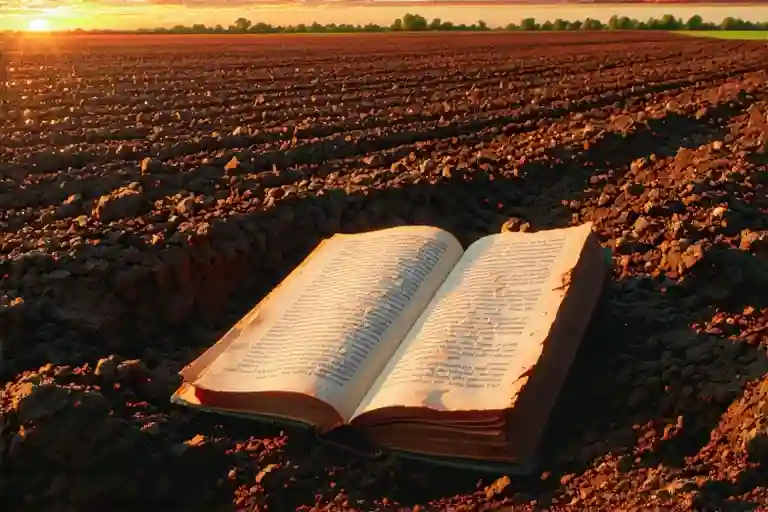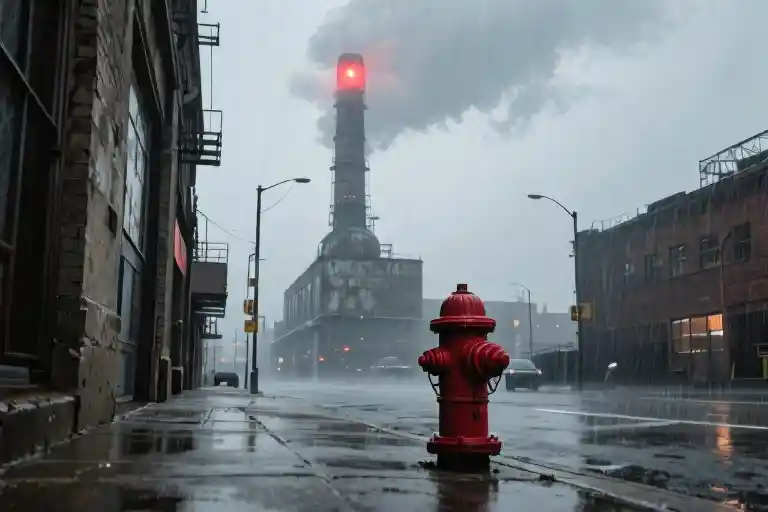At thirteen, Louise Erdrich’s hands first learned the weight of labor—not holding a pen, but gripping beet stalks under the North Dakota sun. Those same hands would decades later craft The Mighty Red, a novel where teenage romance intertwines with the scars of environmental exploitation, earning spots on the Pen/Faulkner Award longlist and TIME’s must-read books of 2024. How does a story of young love in a Red River Valley town become a lens for examining the American Dream’s broken promises?
Erdrich’s childhood in the beet fields surfaces throughout the narrative like buried roots. In a Today.com interview, she reflected: “Picking beets left me with a respect for both the land and the people it consumes.” This duality pulses through The Mighty Red, where the sugar industry’s invisible violence mirrors the emotional labor of relationships. The novel’s deceptive simplicity—a quality praised by Kirkus Prize judges—belies its layered critique of class and ecology.
Set in fictional Tabor, a community as resilient as it is wounded, the story follows two teenagers whose love story unfolds against cracking soil and crumbling economic hopes. Erdrich’s signature tender humor softens scenes where characters confront systemic exploitation, creating what Goodreads reviewers describe as “laughter that dissolves into quiet rage.” This tonal balance makes the novel equally compelling for literary awards committees and high school teachers designing units on Native American literature and environmental justice.
What emerges is more than a coming-of-age tale—it’s a map of how personal stories intersect with larger systems. When the protagonist traces her finger along a sugar packet’s logo, recognizing the same fields where her ancestors toiled, Erdrich invites us to question what sweetness costs. The Pen/Faulkner nomination underscores how such narratives redefine contemporary American fiction, proving that the most potent social critiques often wear the guise of intimate storytelling.
Roots of a Writer: How Beet Fields Shaped a Literary Vision
Louise Erdrich’s hands know two kinds of labor. At thirteen, those fingers learned to grip sugar beet tops in North Dakota’s unrelenting sun, twisting them free from the earth with a motion that would later find its rhythm in typing sentences. Decades after her summers in the all-girl harvest crew, the Pulitzer Prize-winning author still credits those adolescent workdays with teaching her what no classroom could – the visceral connection between human stories and the land that sustains them.
In a revealing interview with Today.com, Erdrich described her beet field initiation as both physical ordeal and spiritual education: “Picking beets left me with a respect for both the land and the people it consumes.” This dual awareness pulses through every page of The Mighty Red, where adolescent romance becomes a lens for examining environmental exploitation and the fractured promises of the American Dream. What begins as personal memory in the author’s youth transforms into universal metaphor – the red-stained hands of beet workers echoing the novel’s title, both literal and symbolic.
From Soil to Story
The sugar beet fields of Erdrich’s childhood weren’t merely settings; they were silent instructors. Working alongside seasonal laborers, the future writer absorbed lessons about:
- The hidden costs of sweetness: How industrial agriculture extracts more than crops from the land
- The poetry of labor: The unspoken camaraderie and unexpected humor found in shared toil
- The resilience of place: How landscapes bear witness to generations of human struggle
These formative experiences crystallize in The Mighty Red‘s fictional Tabor, where the Red River Valley serves as both setting and character. Erdrich’s intimate knowledge of North Dakota’s rhythms allows her to craft scenes where the environment isn’t backdrop but active participant – fields that sigh under exploitation, rivers that carry ancestral memories.
The Alchemy of Experience
What makes Erdrich’s literary transformation remarkable isn’t just that she writes about her youth, but how she transmutes personal history into social commentary. The beet fields of her memory become:
- A metaphor for environmental stewardship through the novel’s depiction of agricultural cycles
- A critique of labor systems in her portrayal of Tabor’s working-class families
- A bridge between cultures as she explores Native American connections to the land
This creative alchemy explains why The Mighty Red resonates beyond typical coming-of-age stories. When the protagonist first notices how “the fields bled red at harvest,” attentive readers recognize Erdrich’s own adolescent awakening to the interconnectedness of human and ecological systems – an awareness that would eventually blossom into her distinctive environmental justice perspective in Native American literature.
As we trace these roots from beet field to bookshelf, we begin to understand how Erdrich’s childhood labor forged not just work ethic, but a unique literary vision – one that finds equal beauty in a teenager’s first love and the quiet dignity of exhausted farmworkers. The land that once stained her hands now colors her prose with equal parts tenderness and truth.
Sugar Beets, Scars, and the American Dream
Louise Erdrich’s The Mighty Red transforms the unassuming sugar beet into a potent symbol of America’s tangled relationship with land, labor, and opportunity. Through the lens of teenage protagonists navigating first love in North Dakota’s Red River Valley, Erdrich exposes the hidden costs of environmental exploitation and the fractured promises of upward mobility.
The Bitter Harvest Beneath Sweetness
The novel’s fictional town of Tabor exists in the shadow of real-world sugar industry practices that Erdrich witnessed firsthand. Having worked beet fields at thirteen, she writes with visceral authenticity about:
- The physical toll: Scenes of backbreaking labor mirror contemporary reports of agricultural workers facing 14-hour days
- Environmental degradation: Sugar beet cultivation’s historical reliance on chemical fertilizers and water-intensive practices
- Economic traps: How seasonal work creates cycles of debt for marginalized communities
What makes Erdrich’s approach remarkable is her refusal to simplify these issues. A teenage character might complain about sore muscles one moment, then marvel at the sunset over beet fields the next—capturing that duality of resentment and reverence many agricultural workers feel toward the land.
Deconstructing the Dream Factory
Erdrich’s young protagonists initially embrace classic American Dream narratives:
“When I turn eighteen,” Jace whispers in Chapter 4, “I’ll buy a Mustang and drive straight to California where the streets are paved with gold.”
Their gradual disillusionment forms the novel’s emotional backbone. Through their eyes, readers encounter:
- Broken meritocracy: Local success stories that depend on inherited land rather than hard work
- Environmental racism: The disproportionate impact of industrial farming on Indigenous communities
- The nostalgia trap: How romanticizing rural life obscures economic hardships
This generational awakening earned The Mighty Red its 2025 Pen/Faulkner Award longlisting, with judges praising its “innovative use of adolescent perspective to interrogate national myths.”
The Hands That Feed
Tabor’s Native American residents occupy a complex position in the novel’s economic ecosystem. Erdrich draws on North Dakota’s history of:
- Land dispossession: How the Dawes Act fractured Indigenous agricultural traditions
- Labor exploitation: 20th-century “sugar beet gangs” composed largely of Native workers
- Cultural resilience: Characters maintaining spiritual connections to land despite industrial farming
A particularly powerful scene shows protagonist Marie teaching her younger brother to identify edible wild plants between beet rows—a quiet act of resistance against monoculture. Such moments exemplify why the novel appears on university syllabi for courses examining Indigenous environmental stewardship.
The Lingering Aftertaste
What lingers after reading isn’t just outrage at systemic injustice, but admiration for how Erdrich makes these issues emotionally accessible. By grounding grand themes in:
- First kisses interrupted by pesticide sprayers
- High school gossip about which families control local irrigation rights
- A prom scene where a character’s dress is literally stained red with beet juice
The novel achieves what academic treatises often fail to—making readers feel the human stakes behind terms like “environmental justice” and “labor equity.” This alchemy of the personal and political explains its crossover appeal, equally at home on literary award lists and young adult book club rosters.
The Alchemy of Laughter and Loss
Louise Erdrich’s The Mighty Red performs a delicate balancing act that few contemporary novels achieve—it makes you chuckle through scenes that should leave you devastated. This narrative alchemy is most palpable during the funeral sequence in Tabor, where a misplaced joke about beet-stained overalls erupts amidst tearful eulogies. The moment isn’t incongruous; it’s profoundly human. Erdrich understands that grief in working-class communities often wears the disguise of humor, a survival mechanism forged in North Dakota’s sugar beet fields where her characters’ ancestors literally bled into the soil.
When Humor Cracks the Shell of Sorrow
The funeral scene’s disruptive comedy serves as a narrative pressure valve. As mourners gather for a young farmworker killed by malfunctioning equipment, the deceased’s cousin recalls how they’d both been scolded for ruining clothes with beet juice—”Red’s the color of shame and supper in this valley.” Laughter ripples through the chapel, followed immediately by stifled sobs. Erdrich constructs these emotional whiplash moments with precision:
“We laughed because remembering him alive hurt less than picturing him still. Then the laughing hurt too, and we didn’t know what to do with our faces anymore.”
— The Mighty Red, Chapter 7
This technique mirrors the dual nature of the Red River Valley itself—a place where the land gives sustenance while demanding sacrifices. Environmental humanities scholars have noted how Erdrich’s “tender humor” (a phrase appearing thrice in Pen/Faulkner Award committee notes) functions as both literary device and cultural truth. In interviews, the author has described hearing similar tonal shifts during her childhood: “At wakes, someone always tells that one story… suddenly the room’s half-crying, half-gasping for air. That’s how we grieve collectively.”
The Valley as Silent Witness
The Red River Valley emerges as more than setting—it’s a mute chorus observing human folly. When protagonists Jay and Mari sneak away from the funeral to their secret riverside spot, they find the water unusually high, swallowing the carved initials that marked their summer romance. The land literally erodes the traces of their love, just as industrial farming erodes ancestral burial grounds elsewhere in the novel. Erdrich’s environmental critique shines through these quiet parallels rather than didactic speeches.
Regional details anchor the symbolism: sugar beet processing plants appear on the horizon “like medieval castles,” their smokestacks puffing white clouds over a valley where “even the dirt remembers.” This personification transforms the landscape into a co-narrator, particularly effective when contrasted with the teenagers’ limited perspective. A Kirkus Prize juror remarked: *”The genius lies in making readers grasp environmental devastation through a fifteen-year-old’s frustration over ruined sneakers.”
Why This Balancing Act Matters
Erdrich’s tonal mastery accomplishes three crucial feats:
- Accessibility: The humor serves as an entry point for readers wary of “issue novels,” gradually revealing deeper layers.
- Authenticity: It captures Upper Midwest cultural rhythms where, as one Goodreads reviewer noted, “We joke hardest when the blizzard’s at the door.”
- Thematic resonance: The laughter-to-whiplash pattern mirrors how communities like Tabor process systemic trauma—in fragmented, nonlinear ways.
Educators teaching the novel have seized on this duality. Ms. Delmar, a high school teacher in Fargo, designed a lesson comparing the funeral scene with Diné (Navajo) “laughter ceremonies,” showing students how “cultural specificity can universalize emotional truth.” Meanwhile, the 2025 Pen/Faulkner longlist citation praises how *”the novel’s deceptive simplicity—like the Red River’s calm surface—hides dangerous undercurrents.”
As the chapter closes, Jay wipes mud from his shoes onto a “Dakota Sugar Co.” billboard—a small act of rebellion that foreshadows the story’s climactic stand against corporate agriculture. The moment lands powerfully precisely because Erdrich has trained us to find humor in defiance and sorrow in soil. It’s this emotional layering that makes The Mighty Red linger in the mind like the valley’s stubborn clay.
Awards, Classrooms, and Reader Resonance
When a novel like The Mighty Red appears simultaneously on prestigious award lists and high school reading curricula, it signals something rare in contemporary literature—a story that bridges artistic merit with tangible social impact. Louise Erdrich’s latest work, longlisted for both the 2025 Pen/Faulkner Award and Kirkus Prize, has achieved this dual recognition by weaving environmental justice themes into a narrative that resonates across audiences.
The Social Conscience Behind Literary Accolades
The Pen/Faulkner nomination particularly underscores how Erdrich’s teenage love story operates on multiple levels. Jurors have consistently favored works that employ “literary craft to illuminate urgent societal questions”—a criteria perfectly embodied by the novel’s exploration of sugar industry exploitation through intimate character portraits. Unlike didactic issue-driven fiction, Erdrich’s approach allows readers to discover systemic critiques organically, as when protagonist June casually notes how “the beet fields bled into the river each spring, turning the valley into a wound.”
This subtlety aligns with what TIME‘s book critic described as “the award’s growing preference for stories where politics breathe through character rather than manifesto.” The Kirkus recognition further highlights the novel’s accessibility, with starred reviews praising its “YA-friendly surface depth”—a quality that later sections will reveal as key to its educational adoption.
From Bestseller Lists to Lesson Plans
In classrooms across Minnesota and the Dakotas, educators are leveraging this accessibility to spark discussions about labor history and environmental ethics. Sarah Mikkelson, an AP Literature teacher in Fargo, shares how she uses the novel’s romance plot as an entry point: “Students initially engage with the love story, but by Chapter 7, they’re debating agricultural runoff regulations without realizing they’ve shifted from literary analysis to civic awareness.”
Her unit plan—available through the National Council of Teachers of English—guides students to:
- Map the symbolic connections between the Red River Valley’s ecology and characters’ emotional arcs
- Compare historical documents about 1970s farmworker strikes with fictional depictions in Tabor
- Create “American Dream” collages using textual evidence of promises vs. realities
This pedagogical approach taps into what makes The Mighty Red uniquely teachable: its layered structure allows instructors to adjust thematic focus based on grade level, from middle school discussions about coming-of-age to college seminars on postcolonial ecocriticism.
The Reader’s Mirror
Goodreads data reveals an intriguing pattern—readers who initially shelve the book as “young adult romance” frequently update their tags to include “social justice” or “climate fiction” after finishing. One reviewer’s journey typifies this shift: “Went in expecting The Notebook meets Little House on the Prairie, came out questioning every strawberry I’ve ever picked.”
Such organic discovery processes mirror Erdrich’s own childhood revelations in the beet fields, creating a full-circle moment that explains the novel’s crossover appeal. When the New York Times included it in their “Books That Changed Minds” roundup, they captured this duality perfectly: “A story that makes you laugh at first page and question your place in an unjust system by the last.”
As awards committees and educators continue recognizing The Mighty Red‘s capacity to entertain while provoking thought, its ultimate achievement may be proving that serious literature need not choose between artistic excellence and social relevance—it can harvest both, much like those North Dakota fields that first planted these ideas in a young girl’s mind.
Conclusion: The Hands That Sow Stories
Louise Erdrich’s journey from beet fields to literary acclaim comes full circle in The Mighty Red. Those same hands that once wrestled with North Dakota’s stubborn soil now craft narratives that dig equally deep into America’s unspoken truths. The novel’s brilliance lies not in providing answers, but in teaching us how to ask better questions—about land, labor, and the illusions we call dreams.
The Red Stain of Truth
Remember the thirteen-year-old girl in the beet crew? Her story never really ended. It transformed—into Tabor’s teenagers whispering secrets along the Red River, into sugar-stained pages that reveal how sweetness often masks exploitation. Erdrich’s genius is making us taste both simultaneously: the tang of young love and the bitterness of systems that grind people down.
This duality echoes beyond the book. When the Pen/Faulkner Award committee recognized The Mighty Red, they honored more than literary craft—they validated fiction’s power to reframe reality. As one high school teacher noted while teaching the novel: “My students didn’t just analyze metaphors. They started seeing beet farms in their own town’s warehouses.”
Mirror or Window?
Perhaps you’ve never worked a Red Valley harvest. But Erdrich’s world feels hauntingly familiar because she writes the America we actually live in—not the postcard version. That neighborhood park? It might sit atop contaminated soil. The after-school job at the mall? It carries echoes of Tabor’s economic traps.
This is why the novel thrives in both classrooms and award lists. It doesn’t shout “THIS IS IMPORTANT”—it simply shows life as experienced by people often left out of glossy American Dream brochures. The Kirkus Prize nomination recognizes this quiet revolution: literature that makes Native American environmental justice feel as urgent as a teenager’s first heartbreak.
Your Turn
As you close the book, notice your hands. Are they clean? Or—like Erdrich’s characters—do they bear traces of invisible labor? The real magic of The Mighty Red is how it lingers, compelling us to examine:
- Which Tabor exists in your zip code?
- What beet fields hide behind local industries?
- When did you last laugh to avoid crying about it?
Great novels don’t end on the last page. They jump into your life like the Red River overflowing its banks. Where will this story flow next? That part isn’t fiction—it’s yours to write.





